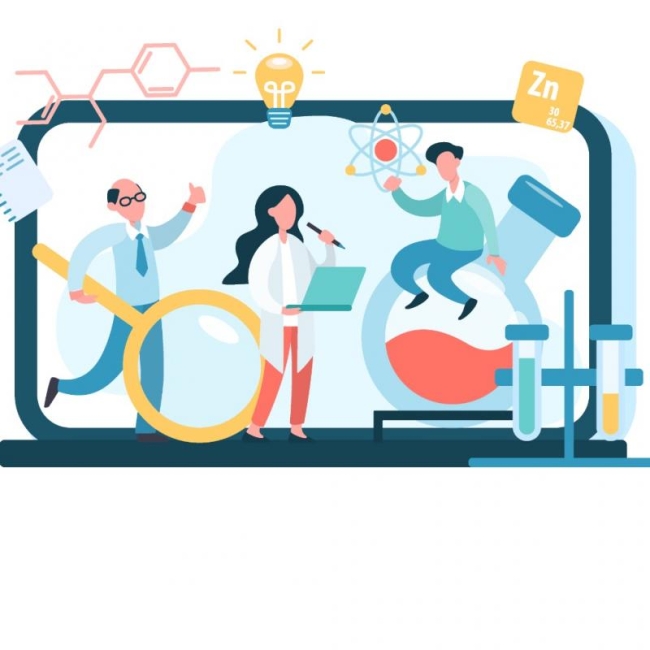You have /5 articles left.
Sign up for a free account or log in.

Istock.com/guzaliia filimonova
This spring, teaching staff at colleges and universities across the United States had to adapt their curricula to go fully remote when campuses closed in response to the growing COVID-19 pandemic. Now, as cases surge past the mid-March levels that closed classroom buildings, many colleges and universities -- like mine, Boston University -- are basically requiring their instructors to teach this fall in person while also offering remote instruction to students who (reasonably) consider it unwise to come to campus.
Under those plans, even if a class can successfully be taught remotely, instructors are expected to commute to campus -- in my case, taking public transit in an urban setting -- to deliver it in person while synchronously offering the same class as an online course. Tangled into the convoluted reasoning offered by universities pursuing such hybrid models is the suggestion that some courses cannot be taught remotely -- particularly, lab-intensive courses.
I disagree. My experience as a teaching fellow for a successful and fully remote summer-term lab class made it ever more clear to me that in-person teaching is not a necessity to achieve pedagogical success. In the middle of a worsening pandemic, why not keep the university community safe by decreasing campus density while also leading as innovators in the world of remote instruction?
As a graduate teaching fellow, I assist in building and teaching the lab component of undergraduate engineering courses, conduct discussion sessions and help with grading. This summer, I was part of the teaching team for a course on electric circuit theory, a lab-intensive course that covers introductory electronics and has about 50 students. The course uses multimodal learning, with lectures on circuit theory followed by a practical lab session engaging with the lecture’s topics. When the course is ordinarily offered on the campus, students attend a two-hour lecture twice a week and nine two-hour lab sessions throughout the semester. Teaching fellows also lead an optional discussion section for three hours each week.
This summer, Boston University’s courses were all held online in response to the ongoing COVID-19 crisis. Despite the challenge of covering the appropriate course work in a more compact time, the logistical hurdles of online participation and lack of the usual on-campus resources, the students and teaching staff (one lab instructor and four teaching fellows) all thought the course was a success.
Community Online
The lecture portion of our course was much like the in-person version of the course. The obvious difference was that the professor conducted the lectures on Zoom, and they were attended “live” by students around the world. For those in time zones that made synchronous participation difficult, the lectures were recorded and posted on the professor’s course website immediately after the lecture. We also used Piazza, an online collaborative and communicative space, which allows students to ask the instructor, teaching fellow or another student a question in an online forum.
Piazza offered a viable substitute to in-person discussion sessions as well as the team learning that students often engage in on campus. We had significant daily engagement with students on it: questions or requests for clarification on homework assignments, labs or lectures, and logistical questions on the syllabus -- just as when we were on campus. As Piazza has an option to make questions anonymous, students were more willing to ask them.
Given the lack of an electronics lab space for all students to use, we had to adapt the experimental component for the course for a remote learning environment. Before the start of classes, we gathered the mailing address of every student. We devised a lab kit containing all the essential components for the labs and shipped the students, wherever they were in the world, a cost-effective substitute of things they would use if they were on campus.
The cost of assembling the kit was $50 each. The total cost of mailing the kits varied from $10 to $120, depending on the destination. Out of 50 students, only four did not receive their kits due to border regulations in their country or loss in delivery. Of those four students, we were able to help one find electronic components for purchase in their own home country, which they used successfully to complete the labs. The other students who did not receive their kits were given the opportunity to use software like Fritzing or LTSpice to simulate the same circuits. The simulation component relied on completely free software online.
We conducted the labs on Zoom for two hours, six times a week, adjusting for students in inconvenient time zones. We used Zoom breakout rooms, with one lab instructor in each room of two to four students, resulting in a generous student-teacher ratio that was even better than in-person labs for the course. As instructors, we received the same kits in order to construct and demonstrate use of the same circuits as the students. To substitute expensive equipment like oscilloscopes, students programmed their Arduino microcontrollers. This creative solution introduced students to microcontrollers earlier than usual -- typically microcontroller use is taught at a later stage in the undergraduate engineering curriculum. Our setup was close to, and at times better than, in-person teaching.
Adaptability and Innovation
This is all to say that the assumption that lab-intensive classes in particular would suffer under an online-only model is incorrect. My experience this summer showed that lab-based courses can meet remote success with proper pedagogy and resources that are well within the reach of the colleges and universities that are considering complicated and pricey hybrid models. In fact, the students were more engaged and eager to learn and build circuits in the comfort of their own homes than when on the campus. Labs were creatively adapted so that students got the full benefit of a lab space while learning more than the typical course would provide.
This approach is not a one-glove-fits-all one -- adaptability is key. Biology and chemistry labs, for instance, would meet different challenges and find different solutions. Technology has advanced to a stage where remote teaching has never been more viable.
Consider the cost-benefit analysis: mailing lab kits and ensuring software access -- which will still be a necessary cost in a hybrid model -- versus filling a campus with students and teaching staff in PPE to do the same thing that can be done remotely without the risk to the entire university community’s health and safety. Beyond the obvious health concerns, this pandemic has clearly demonstrated that working from anywhere is a viable option in many industries. With a motivated teaching staff and the university backing us, we will be able to adapt and build better tools for remote teaching.
To claim that certain teaching cannot be done remotely is to ignore the experience and innovative abilities of the university teaching staff. Teaching does not need to take place in person to meet success -- and especially not during a global pandemic.
I urge higher education institutions considering hybrid fall models to listen to their instructors and staff rather than threatening lives and livelihoods by insisting on a false ideal. Institutions that invest in remote teaching this fall -- and in the health and safety of their faculty members, students and staff -- will be ahead of the curve as digital pedagogy becomes a more persistent paradigm in higher education.




